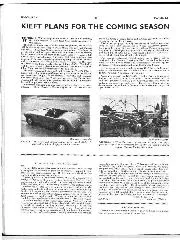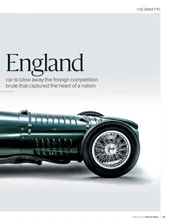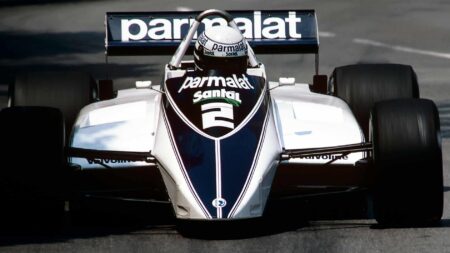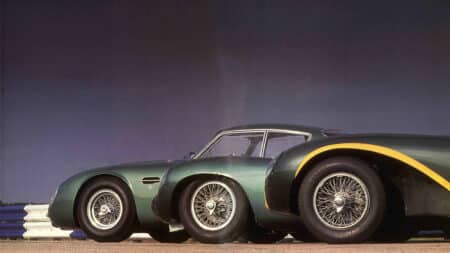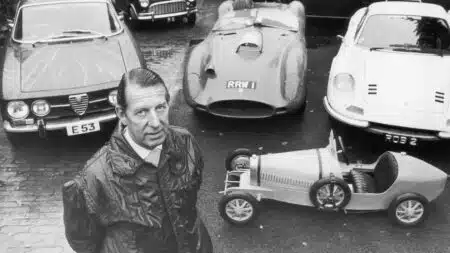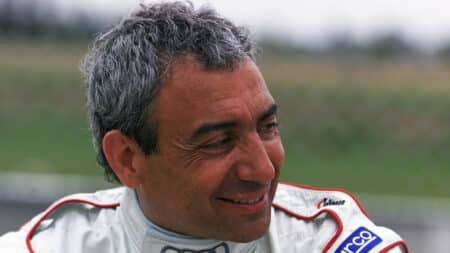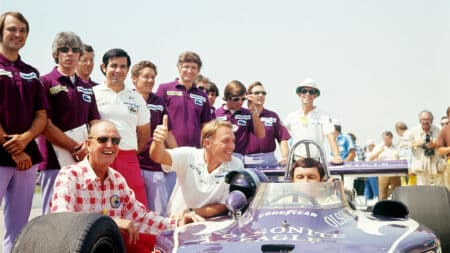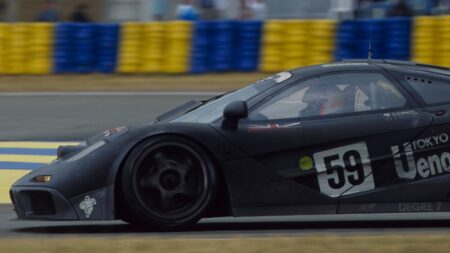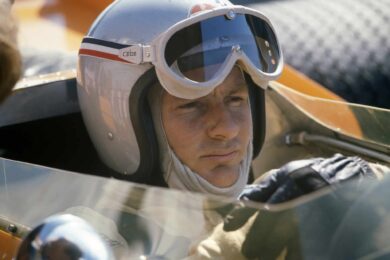But while Kieft seemed to be ready for the new formula, Climax were not. By the middle of 1953, the design was ready. The trade-off between length, width and power was a V8 with four gear-driven camshafts and (until the SU fuel injection was ready) four twin-choke downdraught Solex carbs. A central magneto fired one plug per pent-roof chamber, and hairpin springs (popular at the time for higher revs) closed the two valves per cylinder.
Realising that likely customers would be using proprietary transmissions not designed for racing revs, Climax built in an optional safeguard – epicyclic reduction gear between crank and clutch. This knocked about a third off the revs, easing the strain on the gears.
Tagged the FPE for Fire Pump Engine (detuned versions were actually proposed for industrial use), the unit soon became less formally named ‘Godiva’ after another stripped-down beauty from Coventry.
Lightweight (all-alloy) and compact (only 22.5in long), it was a clean-sheet racing unit ready to face up to the best the Italians and Germans could do. Late in 1953, the testhouse reverberated to the first runs; power, as predicted, was a generous 264bhp, with hearty torque over much of the 8500 rev curve. Kieft, Connaught and the others heard the echoes and held their breath.

Coventry engine would likely have been able to compete with those from the ‘continent’
Charles Best
And went blue in the face. Straight-up, honest-as-the-day Climax now got cold feet. They listened to what Maserati, Ferrari and Lancia were claiming, and believed what they heard. Them ‘furriners’ were 20 or 30bhp ahead; Climax would be starting the season hobbled. Chastened, they canned the project. Only later did the facts show up: Godiva out of the box would have been the strongest horse in the field. Figures of 280, 290bhp from Modena and Stuttgart would certainly become true – after a couple of seasons of development. By which time Godiva would have moved ahead just as far…
Yet there is also a hint that cash was part of the decision. Kieft’s memories seem to support this: “Climax treated me very well and I knew Hassan and Mundy to be reliable. But every month I would send Gordon Bedson over to chase them and he would come back saying, ‘I can’t see much progress and they won’t tell me anything’. So the almost complete car sat around with that dummy engine in it for months.” As the silence continued, a second chassis was converted into a sports car, and the F1 dream faded.
It’s perhaps a stretch to imagine Kiefts defeating the establishment in grands prix, but if Godiva had gone ahead there would certainly have been a posse of privateer Brits harrying the Continentals.
Instead, the little guys were left scrabbling for Alta power. Except Kieft. When a new government de-nationalised steel again, Cyril moved back to his roots, and abandoned motor racing. It was an easy decision: “I’d already been approached to go back into steel, so Climax’s decision confirmed it. If the FPE had gone ahead I’d have been in a quandary. I think I might have stayed in racing: Don Parker was doing well in F3, and our sports cars were making a good name. But I have no regrets; I had five happy years in racing.”


